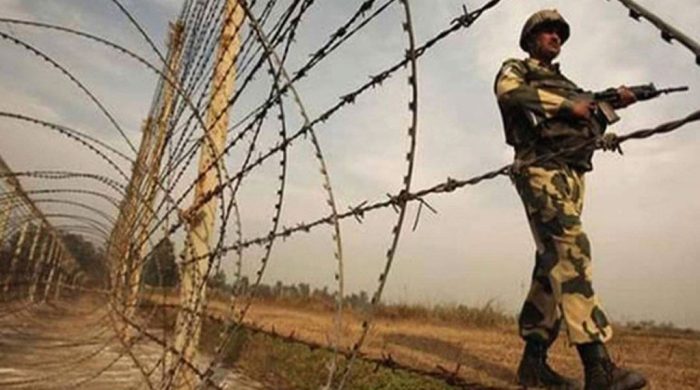Deadly India-Bangladesh border

- Update Time : Thursday, September 26, 2024
- 30 Time View

AFTER months of protests, Bangladesh is still struggling, but it is finally getting back to somewhat normalcy. The country had been cowering in the shadow of escalating state-sponsored terrorism unleashed by the former ruling party, the Awami League.
After a series of street demonstrations, to which the ruling party responded with unprecedented brutality, killing at least 1,000 protesters, prime minister Sheikh Hasina was forced to resign and flee the country. Nobel laureate Muhammad Yunus was chosen to lead an interim government, and he took the responsibility as the chief advisor on August 8.
The fall of the autocracy was celebrated countrywide — the interim government took the oath; student protestors were coming back to their dormitories; everyday markets were recovering. On the border with India, Bangladeshi and Indian citizens started moving along with the trade vehicles. Sadly, if we shift the gaze to the north-east Sylhet region, we saw a Bangladeshi teenage girl was shot by the Indian Border Security Force while crossing the Bangladesh border. On the Bangladesh side, kids were playing in open fields. Ankle deep in mud, they run around hand in hand, leaving patches of vibrant green in their wake. Further afield, the border remains lined with barbed wire fences and checkpoints, guarded with bloodthirsty eyes by BSF.
The Bangladesh-India border’s instability is revealed: border killings by BSF resumed. The towering anti-Indian sentiment flared. Many claimed that the floods that have hit several districts in eastern Bangladesh were triggered by the release of water from the Dumbur dam in Tripura. Bangladesh-India relations appeared to be at a low point, and the public and mass media have held India responsible for the recent floods, though the claim is denied by India’s ministry of external affairs.
Human rights agencies published reports revealing incidents of merciless killings at the India-Bangladesh border. Border killings are common incidents, the latest of which occurred this past weekend with the BSF killing of a 13-year-old schoolgirl in Moulvibazar. Such incidents are a regular occurrence, as are the use of force, arbitrary detention, and torture.
Crossing the Bangladesh-India border is a daily routine for the people of both countries. Whether it’s for meeting relatives, trading, receiving healthcare, or other necessary things, Bangladeshis cross the border both legally and illegally, despite many risks. What are the consequences? On the Bangladesh side, one notices that the barbed-wire fence went through the middle part of a nearby house, splitting the family into two parts. Two brothers ended up in two different countries. There are houses where the kitchen is in one country and the bedroom is in the other. The barbed-wire fence, as a wall, has divided citizens from what once used to be their family. This is not merely the severing of emotions and ties. It robs people of their citizenship rights.
Ironically, the border wall promotes trade and restricts the movement of people. This is to India’s advantage, just like the maquiladora agreement between the US and Mexico. In the US/Mexico case, a formal trade agreement created a series of industrial factories on the Mexican side of the border that supply machine parts as well as finished goods for the US market. The factories offer easy passage into the US but are not subject to stricter environmental and worker safety regulations. They also take advantage of lower prevailing wage rates in Mexico. While India and Bangladesh do not have similar formal arrangements, the cost of transporting goods from India’s ports to Europe and the US is much higher than the cost from Dhaka. Letting trade goods cross the border into Bangladesh puts Bangladeshi exports at a great comparative disadvantage.
The movement of people is another matter. To prevent routine Bangladeshi movement back and forth to India (what the Indian government terms ‘infiltration’), a militarised border wall was built. Bangladeshis who cross the Indian border without valid documents end up as victims of state repression.
The Awami League government enjoyed good relations with both the current Modi government and the previous Congress-led government in India. They regarded India as their ‘close kin.’ When border killings took place amidst ‘friendly’ ties, both sides hastened to call those incidents ‘unwanted’ and ‘unfortunate.’ The people of Bangladesh have seen through this hypocrisy and have cast their lot with the current interim government, hoping, among other things, to bring balance to the bilateral relations with India that mean so much to Bangladesh’s future. With the fall of the Awami League government, the whole world is on notice that renewed respect for human rights should inform the regulation of border crossings.
Dr Zahir Ahmed is a professor of anthropology at Jahangirnagar University, a research professor of anthropology at the University of Buffalo, NY; and a former member of The Proliferation of Border and Security Walls Task Force with the American Anthropological Association.















